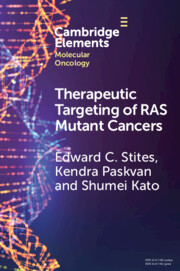Element contents
Therapeutic Targeting of RAS Mutant Cancers
Published online by Cambridge University Press: 26 August 2022
Summary
- Type
- Element
- Information
- Series: Elements in Molecular OncologyOnline ISBN: 9781009064828Publisher: Cambridge University PressPrint publication: 15 September 2022
References
- 3
- Cited by

